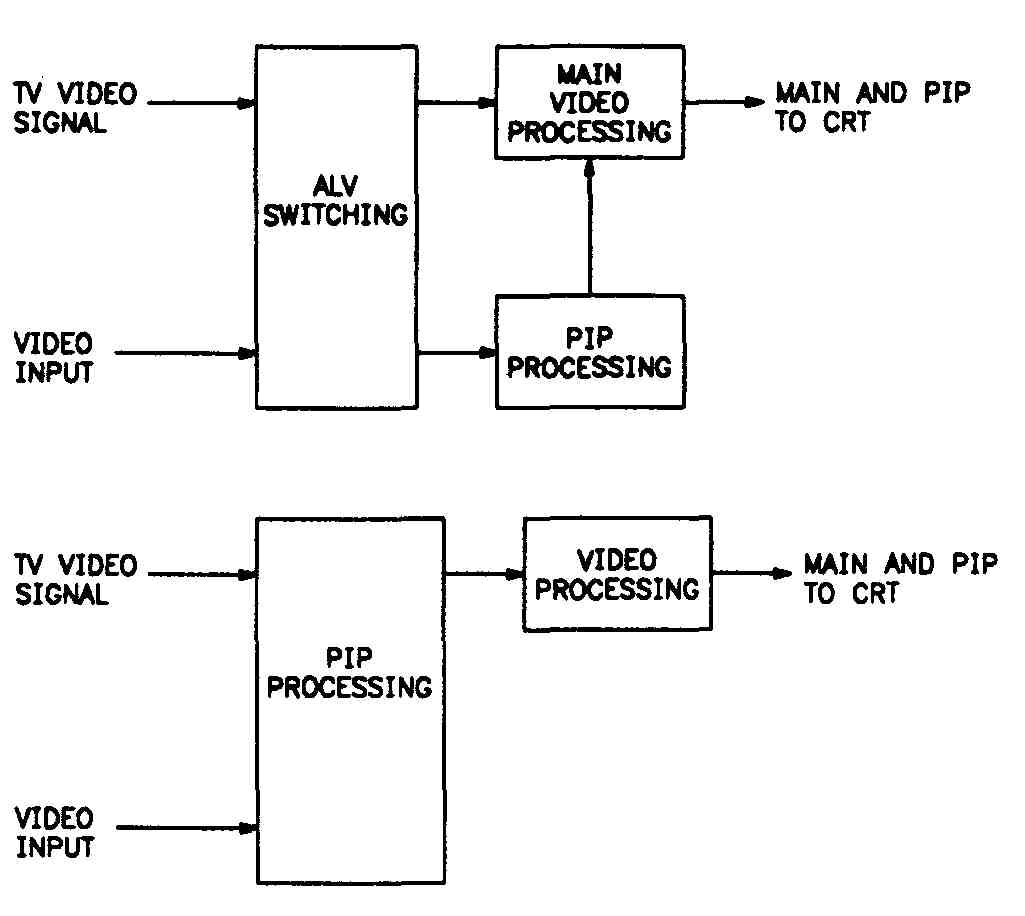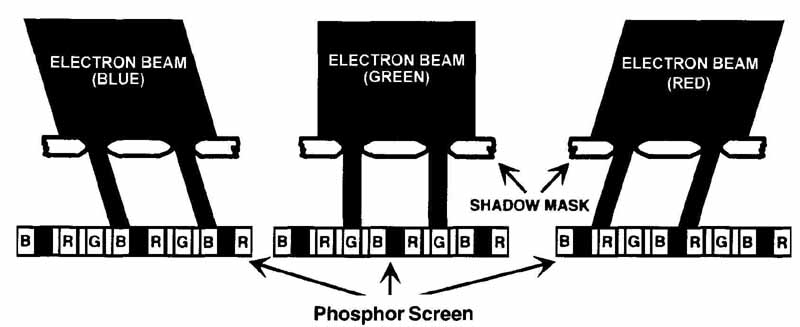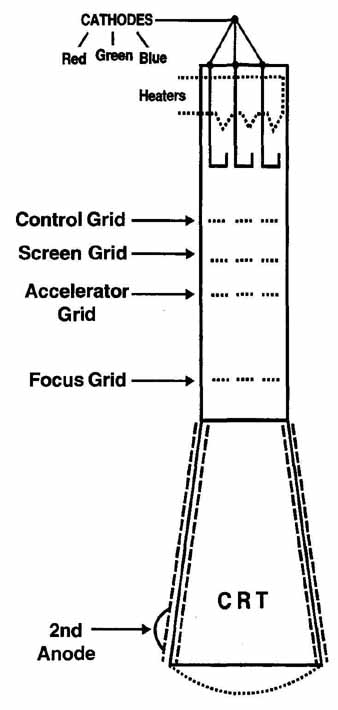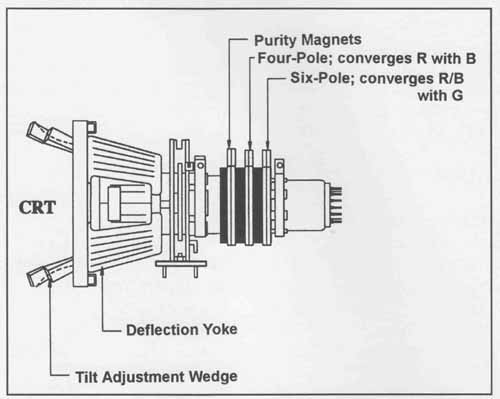FIG. 1 shows a block diagram depicting the basic video stages. The shaded areas on this block diagram are the areas in the television that are involved with producing video:
1. IF amplifier.
2. Video detector.
3. Video amplifier.
4. Audio/video switching.
5. Comb filter.
6. Delay line.
7. Video processing.
8. Last video amplifier.
9. Chroma processing.
10. PIP.
11. How a CRT works.
Note: When you check voltages in the troubleshooting procedures, refer to the television’s schematic for the correct voltages.
Note: The circuits shown in this Section are commonly-used circuits. There are circuit variations used by manufacturers that perform the same functions, but may have different stages and configurations than the ones shown.

FIG. 1. A block diagram showing the basic video stages (shaded).
If, when troubleshooting you are measuring voltages equal to or more than 1 000V, use a high voltage probe. Very high RF voltages may burn out an oscilloscope and other equipment designed for lower voltages.
Troubleshooting the Video IF Amplifier
The purpose of the IF amplifier, shown in FIG. 2, is to provide the required increase to the strength of the signal received from the tuner. The AGC is coupled to the IF amplifier and monitors the average strength of the sync signal pulses. The IF amplifier is usually three transistors linked together or is internal in an IC.
Since the composite video, audio and sync signals pass through the IF amplifier, a failure in this stage would affect all three signals. When you test the IF amplifier, measure all voltages on the IC using a voltmeter. FIG. 3 shows where in the circuit to test for the signals.
Note: Troubleshooting the IF amplifier and the video detector is very difficult at times. Measuring the inputs, outputs and associated components is the only test that can be made. If any measurements are in question, substituting the IC may be the only recourse.

FIG. 2. An IF amplifier connected to an AGC.
When troubleshooting problems in the IC, measure voltages into and out of the IC itself. Also, measure voltages into and out of any components that are connected to the IC.
FIG. 4 shows where to measure voltage in the IF amplifier. If the problem is in the first stage of the IF, the sound and picture are affected. However, some of the signal usually will pass through. Therefore, the symptoms may be:
1. Very weak video, or snow in the picture.
2. Some scan fling raster.
3. A weak hissing sound that can be increased or decreased using the volume control.
4. No program sound.
The symptoms of a defective second stage are similar to the symptoms of the first and third stages. When you test the second stage, change the channel. If you notice any change in the picture, the IC is probably working properly.
Because the video detector is closely linked to the third stage, it is often difficult to tell if there is a problem in the IF amplifier or the video detector. If the problem is in the third stage, there is no audio or video; however, there
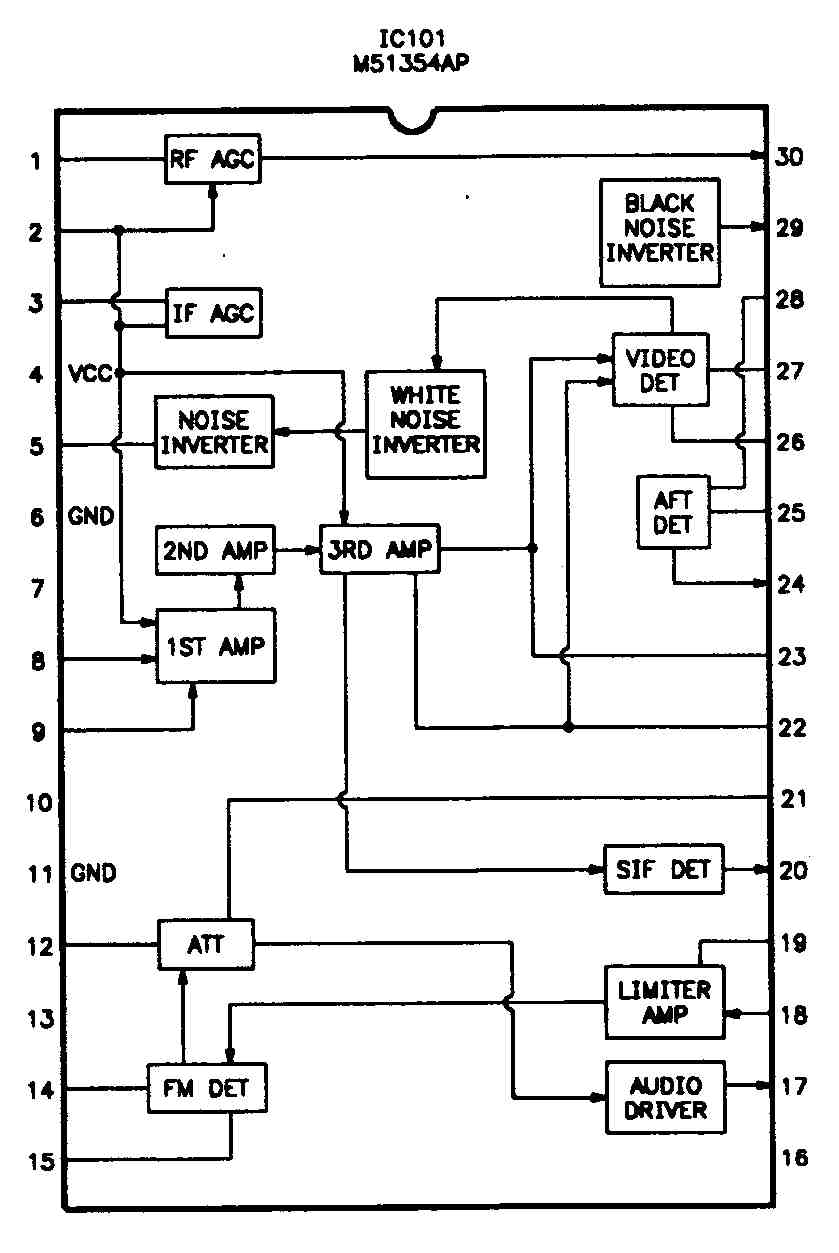
FIG. 3. A diagram showing IC function.

FIG. 4. Measuring voltage in the IF amplifier.
The pins in italics are the ones being examined.
is a scanning raster. This is very similar to the symptoms produced when there is a faulty video detector. There will be a soft background hum and maybe some background noise which you can control with the volume control.
Now, suppose you have a television in which the raster appears to be nor mal, there is some slight hissing when the volume is full, but there is no picture or sound. Changing channels does not produce a difference.
Check the signal at the last stage using a voltmeter. Measure the power supply voltage. If any of the voltages are suspect, substitute a new IC for the faulty one and normal operation should resume.
Troubleshooting the Video Detector
In newer televisions, the video detector, shown in FIG. 5, is the last stage of the IF amplifier circuit. This circuit:
1. Converts the amplified signal from the IF amplifiers.
2. Separates (demodulates) the signal into a video signal with audio IF signals.
3. Sends the signals to the video amplifier.
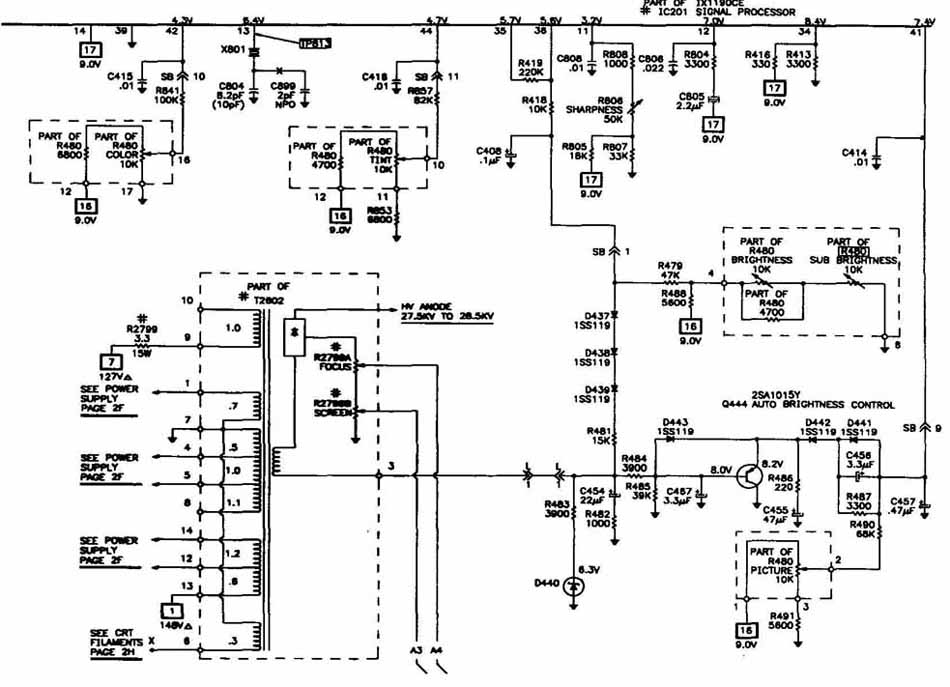
FIG. 5. A simple schematic clip showing all of the controls, with the names
called out.
Troubleshooting Symptoms
In older televisions, the video detector uses a diode to detect the input signal from the IF amplifier. (See FIG. 6.) If you have to replace this diode, make sure you use an exact replacement and insert the replacement in the same polarity. If the polarity is reversed, the resulting picture will be a negative of the original (dark is light, and light is dark), as shown in FIG. 7. In newer televisions, signal detection is accomplished by a synchronous detector that is part of an IC.
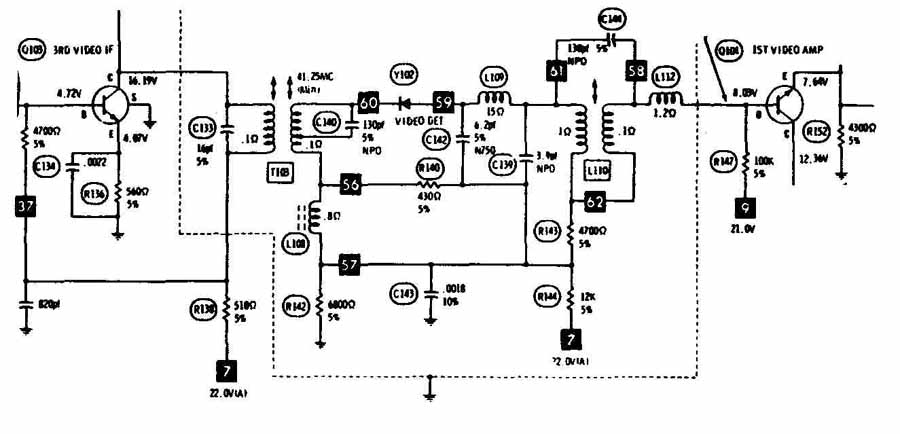
FIG. 6. A diode used as a video detector
The symptoms of a faulty video detector are much like those caused by a faulty third transistor in the IF amplifier. There is no audio or video, but there is a scanning raster. Also, if the video detector is faulty, there will be a soft back ground hum and maybe some background noise that you can control with the volume control.
If the video detector’s output signal decreases, the quality of the picture decreases. Use signal injection to test the video detector and measure the signal voltages with an oscilloscope. If you inject an IF output signal in the input of the video detector and a signal appears on the output using an oscilloscope, the video detector circuitry is probably good. If you inject a signal at the detector’s output, and a signal appears on the CRT, the detector is faulty.
Troubleshooting the Video Amplifier
The video amplifier circuit increases the signal from the video detector. Then, the color, sound IF signal and the sync signal pulses are separated from the picture information. The sound IF signal is sent to the sound IF amplifier. The sync signal pulses are sent to the sync circuits.
If you use an oscilloscope, look for the composite video signal at the first transistor. (See FIG. 8.) If you use signal injection, disable the video amplifier and inject the signal on the output of the video amplifier.
Note: In newer televisions, the sound IF amplifier is internal to the video IF IG, and is not accessible for testing. Only the output to the 4.5 MHz trap is accessible.

FIG. 7. A negative picture, indicating reversed polarity.
In older televisions, the video amplifier circuits have three or four linked stages. (See FIG. 9.) A failure in any one stage can prevent the signal from passing through correctly. However, even if one stage is completely dead, some of the original signal can still feed through. The symptom to look for is a very weak picture on all stations, not just one station. However, when receiving by antenna, some stations may appear to be stronger than others because of the varied strengths of the signals received by the antenna. Cable stations appear more uniform because of the uniform strength of the transmitted signals.
If the first stage in a three-stage video amplifier fails, the sound, video and synchronization can be affected. The audio, color and sync signals are most often taken off before the second stage. Therefore, failure after this point will disrupt the video, not the other three signals. For example, picture instability, such as rolling or tearing pictures, points to a failure in the first stage because the sync pulses are disrupted. If this first stage fails, the sync pulses can be degraded so that they cannot hold the picture vertically and horizontally. However, if the sound, color and raster are normal, the first stage is working correctly.
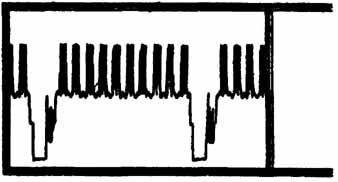
FIG. 8. Waveform of a composite video picture at the first transistor
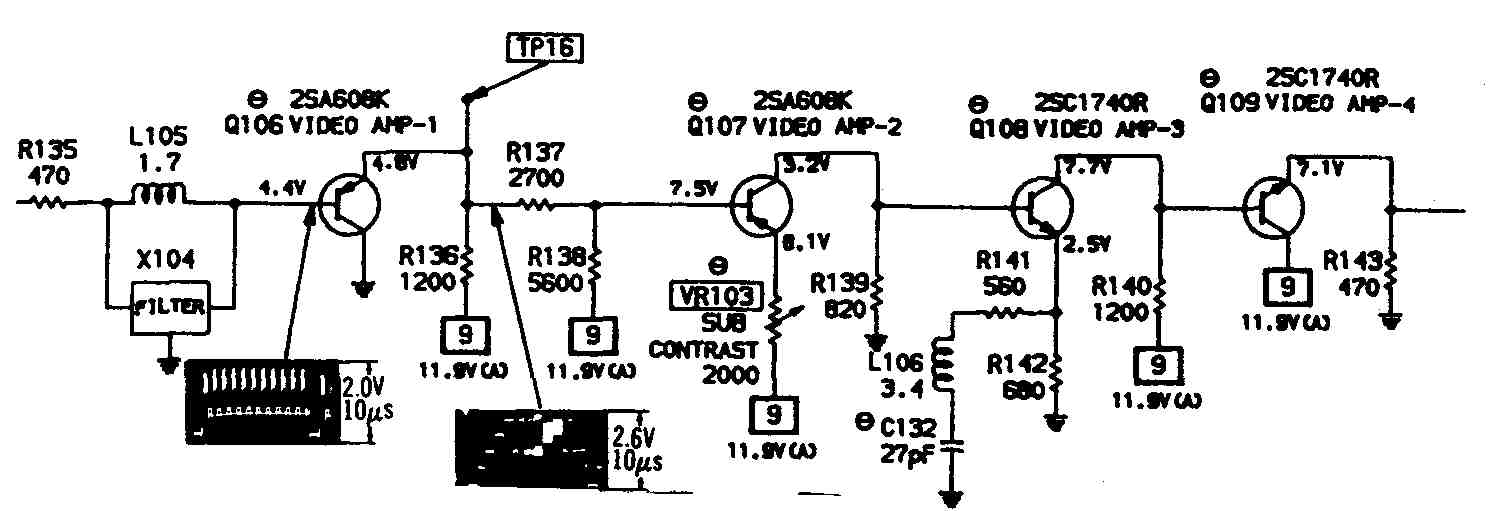
FIG. 9. The linked stages of an older video amplifier circuit.
Suppose the symptoms you see are normal audio, no video, and faint raster? When you check the video amplifier circuits using a voltmeter, you may find that the second stage failed because of an emitter-to-collector short. Because of the short, the collector voltage at the second stage dropped. When the voltage dropped, the current dropped, and the stage shut off. This decrease in output voltage caused the picture brightness to decrease.
Another symptom of a faulty video amplifier are audio signals that show up in the video. The herringbone pattern of the signal seen on the screen can be caused if the 4.5 MHz audio trap circuit is misaligned or if there is a shorted capacitor in the circuit. If the capacitor is open, the video gain is reduced at high frequencies.
When you troubleshoot the video amplifier circuit, measure the input and out put voltages using a voltmeter or measure the waveforms using an oscilloscope. Because the transistors are linked, the bias on each transistor is directly affected by the preceding transistors. Therefore, the collector bias voltage on the output of the first transistor is the same as the base voltage on the second transistor. It is important to check each transistor in the chain to deter mine which one caused the problem. Also, check them in order.

FIG. 10. An A/V switching circuit.
The video amplifier in newer televisions is normally a single transistor amplifier or buffer that goes to the SIF circuit and an audio/video (NV) switching circuit. After the A/V switching circuit, the signal goes to the video processing stage typically internal in an IC. The symptoms previously described can still apply. However, the only way to test the IC may be by signal injection. After the A/V switching circuit, use a voltmeter to measure al I pins on the IC and a scope to measure all waveforms. If any voltages are in question, substituting the IC may be required.
Audio/Video (A/V) Switching
NV switching circuits are used to switch to an alternate audio or video source. For example, a VCR video can be watched through the NV inputs on the receiver, or a second video signal can be supplied to the PIP circuits of a PIP feature.
A switching circuit is normally an IC controlled by the microprocessor control circuit. Its purpose is to switch the proper audio and video signals to the processing circuits. Video switching problems are most often located in the system control or A/V switching circuits. (See FIG. 10).
Comb Filter
The color signal is passed through a narrow bandpass filter that separates the chroma signal information from the luminance information. The comb filter is typically adjustable. To adjust the comb filter, connect an oscilloscope to the input of the last video amplifier. Adjust the potentiometer or adjustable coil for a minimum chroma component in the luminance signal.
Note: To properly adjust the these controls, proper service literature should be obtained.
Delay Line
The luminance portion of the video signal needs to be slowed down to allow for synchronization with the color signal. This is done through the delay line. A delay rarely fails, but if it goes bad it will produce either a faulty luminance waveform or no luminance waveform for the video processing circuits.
Picture Adjustment Controls
The following sections discuss the picture controls, which are located in the service literature video processing circuits. These controls are in or around the video processing IC, and are rarely faulty. There are two main types of picture controls: The digital control and the analog control.
FIG. 11 represents a digital control. The picture control settings are controlled internal to the IC101; however, the system control IC sends information to IC101 via the serial data line at pin 15. Use an oscilloscope to look for data transfer on pin 15—there is no other practical troubleshooting test to perform. Check for proper chroma and luminance waveforms at the inputs of (C101, then check all DC voltages on IC101 and IC001 (system control IC). Compare the voltages to those depicted in the DATASHEET schematic to determine which IC could be faulty.
FIG. 12 represents an analog control. The picture settings are determined and controlled by the system control IC (IC345). When a picture control is adjusted, the voltage on the appropriate pin of IC270 (27, 29, 30, 31 and 32) will change to a new DC level. This is called stepped voltage control. The process that occurs is a pure analog action, determined internally in the system control IC (IC345). IC270 can be tested by using a variable DC supply and applying a bias to the appropriate pin of IC270.
Since the mid-1980s, these two types of picture controls have become very common. The way the system control determine the settings is manufacturer dependent; however, there are chassis being made that still use the potentiometer to determine settings. This is also an analog-type control circuit. The following sections deal with these controls and how they affect the video signal.
Peaking Coil
The video peaking coil is located in the video processing circuits and is resonant to high frequency signals. This means that high frequency signals that might be lost are boosted by the resonant circuit, resulting in amplified high frequency signals. The result is overshoot—light edges around dark images and dark edges around light images, producing a sharper image.
If the image is too sharp (harsh) or if the light to dark areas are washed out, like the pictures in FIG. 13, use the television’s sharpness control to adjust the frequency of the circuit. However, if you adjust the sharpness control and the problem persists, there could be a problem with alignment or with the CR1.
The sharpness control is connected to the video processing IC and varies the level of high frequency signals to the video amplifier. To accomplish this, the sharpness control causes some of the high frequency signals to go to ground, thus reducing the harshness of the picture. Also, the scanning raster (snow) and interference from other signals are in the high frequency range. If you ad just the television’s sharpness control so that these high frequency signals are grounded, these signals do not interfere with the normal picture.
Sharpness Control
If you see interference from other signals, and cannot reduce the interference using the sharpness control, check the video IF circuits.
Contrast and Picture Controls
The contrast control component varies the amount of white-to-black level of the video signal. (See FIG. 14.) This control varies the signal gain on one of the video amplifiers by changing the resistance in the emitter circuit or the amount of signal voltage on the amplifier’s base terminal. It does this with a voltage divider.
When the contrast control is not working correctly, the dark and light images are not distinct and appear to blend. Also, the picture control circuits on larger televisions usually control both contrast and color, and make the overall picture smoother and less grainy. When the picture control is not working properly, the images will look like those in FIG. 15. If you adjust the contrast using the contrast and picture controls and the problems persist, check the video processing circuits, and components associated with sub-contrast and sub-picture level controls.
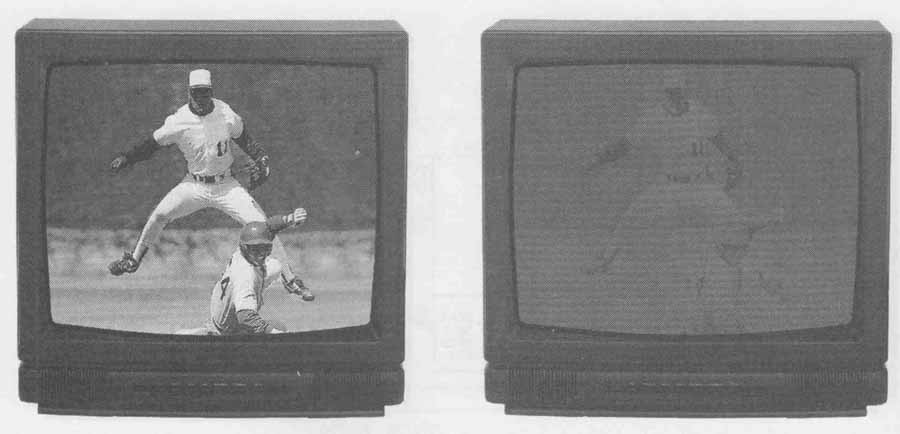
FIG. 13. One picture (left) is too harsh and the other (right) is too dim.

FIG. 14. The contrast control varies the amount of black-and-white level
of the video signal.
Brightness Control
The brightness control component adjusts the circuits that affect the DC bias, on the CRT, thus adjusting the amount of current to the electron guns. The picture can be very dark when the current is limited, or very bright when the current is increased.
Most televisions have an automatic brightness control circuit usually called a brightness limiter. If you use the brightness control and the picture does not improve, check the CRT board and circuits or the CRT itself.
Vertical and Horizontal Blanking
Vertical and horizontal blanking turn off the CRT during retrace so that retrace lines do not appear on the screen when the electron guns move from the end of a line to the beginning of the next line, and from the bottom right of the screen to the top left. The vertical and horizontal synchronizing pulses, which occur at the end of each line, cause a blank period to occur in the video signal between the lines. Failure can cause a very bright, washed-out picture with bright diagonal lines across the screen.
Last Video Amplifier
The last video amplifier is the last place to scope the video before it goes to the CRT board. Sometimes this is done in the video processing IC. However, if you scope a proper waveform at the input of the last video amplifier and the picture has no luminance, the last video amplifier needs to be checked. (See FIG. 16.)
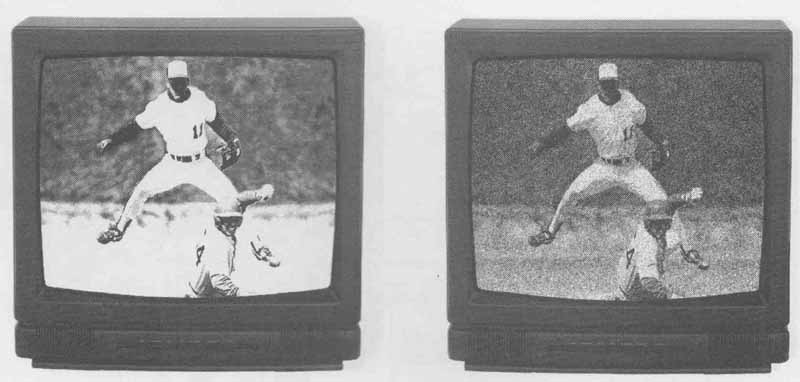
FIG. 15. Contrast and graininess problems.
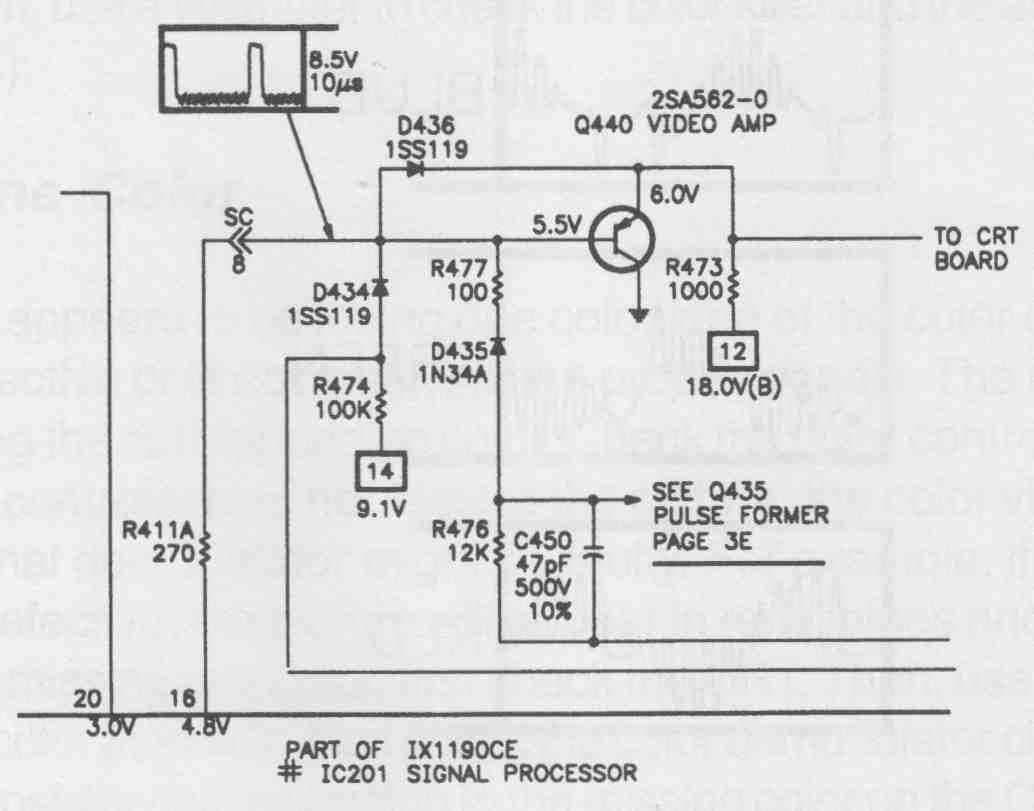
FIG. 16. The last video amplifier.
Chroma Processing
When the original signal is produced in the television studio, the camera captures the color and sends the signal to a modulator. The modulator circuit combines the three color signals into one color signal. This circuit also produces a color sync signal. The color signal is then called a color modulated signal. The color sync signal (also called the color burst) is an unmodulated 3.58 MHz carrier.
A television’s color processing circuits recreate a color picture and produce the color picture on the screen. Essentially any color can be created from the primary colors: red, blue and green.
When the signal is received, the color sync signal turns on the 3.58 MHz oscillator and synchronizes it with the signal being received from the station. The signal from the oscillator is output to the color killer which turns on the color IF amplifiers so that the signal can be amplified. After amplification, the signal is passed to the color demodulator circuits. In the demodulator circuits the original red, green and blue signals are separated and sent to the red, green and blue color amplifiers. The color amplifiers combine the three color signals with the black-and-white information (luminance), then pass the signals on to the three electron guns which produce the color picture on the screen.
When these circuits malfunction, the result can be no color, color that is too intense, loss of one color, one or all wrong colors, or loss of color synchronization. For example, if the demodulator circuits fail, you might see no color, an incorrect tint or intensity, or intermittent color, tint or intensity. FIG. 17 shows the red, blue and green color waveforms to expect when testing the color circuits.
Automatic Kine Bias (AKB)
Automatic kine bias (AKB) is circuitry used to adjust the beam current of each electron gun individually. This circuitry is intended to prolong the life of the electron guns and give optimum color setup. The setup is done only once in the lifetime of the CRT, or until a malfunction occurs within this circuit. The AKB IC samples the vertical blanking pulse for timing, and sources a small bias current to the cathode drivers to draw beam current independently on the electron guns. The AKB IC senses and adjusts with every vertical blanking pulse. For an optimum color screen setup, this is critical but relatively easy to set for most standard chassis.
No Color
If there is no color, the problem can be in the IF amplifier, the color killer, the oscillator, or the color amplifier. If any of these circuits are defective, color signals cannot be processed and there will be no color. When you test these circuits, test the color killer first.
Color Too Intense
If the color is too intense, try to readjust the picture using the color intensity controls. If this does not clear up the problem, the color amplifier may have too much gain. Use an oscilloscope to look at the input and the output of the color amplifier. Then, use a voltmeter to check the color killer and the automatic chroma control (ACC).
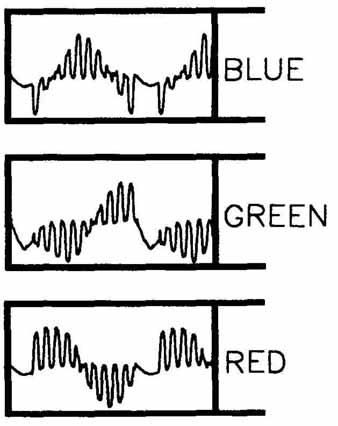
FIG. 17. Red, green and blue waveforms.
Losing One Color
If the picture appears to be losing one color, one of the color guns in the CRT might be defective or is not receiving the proper signals. The resulting picture will be missing the corresponding color. Check the color controls first. If adjusting the color controls does not restore the picture, the color video amplifier or the color signal demodulator might be faulty. For example, if the green color amplifier is defective, the picture will appear in reds, blues and purples. When the picture is missing one color, first check the CRT. Then, use an oscilloscope to check the color amplifier. Also check the color demodulator circuits and check the output transistor corresponding to the missing color on the CAT circuit board.
One Color Is Incorrect
If one color is incorrect, first try to readjust the picture using the tint control. If this does not clear up the problem, there might be a problem with the color signal demodulator which causes a phase shift of one color signal. Use an oscilloscope to check the input signal and the output signal to the color signal de modulator. If the waveform is present, remember that it must have the correct shape, as shown in FIG. 17. These waveforms represent the pure color after the luminance (Y) has been removed.
All Colors Are Incorrect
If all colors are incorrect, but there is color present, the tint control might be adjusted improperly. The tint control actually shifts the phase of the color oscillator output signal. If the tint control does not correct the problem, the color amplifier may be faulty or the sync is slightly off frequency with the burst. Use a voltmeter to test the color amplifier. Check also the CRT board and the three video output stage circuitry.
Loss of Color Sync
When the color sync is faulty, the color and the luminance are not synchronized, and the result is a chaotic picture. The picture may look like color rainbows within a black-and-white picture.
The horizontal oscillator frequency must be correct—15,735 Hz—for the luminance to be in sync. Likewise, the 3.58 MHz color oscillator frequency must be correct for the color picture to be in color sync. If the color sync is lost, check the signals from both the horizontal oscillator and the 3.58 MHz color oscillator. Use an oscilloscope to check the waveform from the color oscillator. Most chassis use a 3.58 MHz oscillator crystal, which can be defective.
Then, check all of the voltages passing through the color processing circuits and the components in the color processing circuits. For example, in the oscillator circuit, look carefully at the transistors. Not only does the oscillator have to work correctly, it also must be locked in phase with the color burst in the signal from the television station. If the color sync amplifier is not working properly, phase lock might be lost. If all of the chroma is processed inside an IC, re place the IC.
NTSC Color System
The NTSC—National Television System Committee—color system requires phase control of the transmitted color signals so that there is the correct relationship between the color burst and the color signals. If this phase is not con trolled, color shifts appear in the signals, resulting in poor color picture quality. NTSC is a national standard that is enforced in the United States. Some countries have similar standards that are not compatible with NTSC.
The NTSC color bar generator is a good signal source when troubleshooting problems in televisions.

FIG. 18. A picture with a PIP window.
Picture-in-Picture (PIP)
Televisions with a PIP circuit, shown in FIG. 18, let you view more than one picture at the same time. One picture will appear on the main screen, and another picture will appear in a small picture window on the screen. Some televisions let you show multiple small picture windows. Also, you can specify where on the screen the small window appears. You can swap the pictures so that the picture that appeared on the main screen now appears in the small window, and vice versa.
Most of the picture functions, such as freeze and slow motion, operate on the PIP picture. However, only one picture, the main screen, will have audio.
The PIP circuit is normally a plug-in module. The signal processed for the PIP window is normally provided by the NV switching circuit. However, some manufacturers insert the PIP circuit directly into the video path. The PIP window is only displayed when the user calls for it. FIG. l9shows block diagrams of the two ways PIP can be used with respect to the video. Exactly how the PIP circuits process the signal is manufacturer dependent.
Troubleshooting the PIP
The PIP circuits from the various manufacturers are not the same. When you troubleshoot the PIP circuit in a television, refer to the documentation from the manufacturer or to the DATASHEET schematic for that brand and model.
If the PIP circuit is faulty, you may not see color in the small picture window or see a small picture at all. If there is no picture in the small window, check the video signal input waveform at the PIP processing circuits for a proper signal. Then, check the supply voltages to make sure the PIP circuit is receiving the correct voltage.
If there is no color in the small picture, measure the luminance and color signals at the PIP’s input stage. Also, check that the chroma signals are being received by the PIP circuit. If the input signals are being received, the PIP circuit is probably faulty.
If the small picture rolls vertically, but the large picture is normal, check the vertical sync signal at the PIP circuit input. Then, check the output of the PIP circuit’s sync signal processor. If the small picture is not stable horizontally or takes a while to become stable, check the horizontal and vertical sync wave forms at the PIP processing IC.
How a CRT Works
A television picture tube (CAT) is a glass envelope. The viewing screen is usually rectangular with a width that is 4/3 of the height. The ratio of the horizontal width to the vertical height is called aspect ratio.
The neck of the CAT is between one and two inches in diameter, and contains the electron guns, heater elements, and typically four grids. The neck terminates with a series of pins that connect the CRT to the rest of the chassis.
In addition to the components in the neck, the CRT contains a second anode. The second anode is not connected through the CAT socket, as arcing be tween the pins could occur due to the extremely high voltage potential. A conductive coating lines the inside of the CRT between the second anode and a high voltage socket commonly called the second anode button. The coating also connects the shadow mask and the phosphor screen. After the electron beam passes through all of the grids, it must pass through the shadow mask. The shadow mask (also referred to as the aperture) is a thin piece of metal with thousands of tiny, vertical slit-shaped openings. The shadow mask is located about half an inch behind the phosphor screen, and is mounted with special bimetal holders. The shadow mask is a final effort to make certain that the beam of electrons hits exactly the right color dots, as fully as possible. (See FIG. 20.) When the CRT is initially fired up, it is relatively cold.
As the electrons bombard the shadow mask, the electrons which do not pass through hit the mask and are dissipated as heat. Because of the bimetal holders, as the mask heats up, it moves closer to the phosphor screen to maintain proper physical alignment due to the expansion of the slits. This is why it is generally recommended to allow at least a ten-minute warm-up time before any adjustments are performed. The intensity and focus of the individual electronics beams are determined by the grids.
The air inside of the CRT is evacuated to form a vacuum. In a vacuum, heated oxide surfaces emit large quantities of electrons that form a cloud. If an electrode near the oxide surface is made positive, the electrons travel toward it. The part that emits electrons is the cathode, and the grids are the positive attraction.
The control grid ( FIG. 21) has a small hole or slot in it. When the electrons from the cathodes are attracted by the positive charge on the control grid, the electrons pass through all of the grids. This is because the electrons are attracted to the more powerful charges of the following anodes. This process of passing the electron beams through the grids narrows the beams. As the beams travel toward the final anode, they accelerate and travel in a straight line down the axis of the CRT toward the center of the screen. When the beams strike the screen, it excites the phosphor which creates a bright spot on the screen. The deflection yoke, controlled by the horizontal and vertical circuits, bend the electron beams across the face of the fluorescent-coated screen in order to form the images.
Refer to the section Working With a CRT in Section 2 for basic guidelines on working with a CRT.
Troubleshooting a CRT
Most of the symptoms pointing to a defective CR1 can also be produced by components other than the CRT. To quickly determine whether the source of the problem is the CRT or other components in the chassis, use a CRT tester to test the CRT. You also can use a color picture test jig to replace the picture tube and see if the picture returns to normal. Either way, you know relatively quickly whether the CRT needs to be replaced.
The following are some symptoms of a defective CRT:
1. Sound, but no picture. In this case, the screen lights but does not produce a picture. If there is a scanning raster, the problem is probably caused by a circuit in the chassis. Also, incorrect voltage on the cathode or grid circuits can cause the CRT to not produce a picture.
2. No scanning raster or an intermittent scanning raster. The screen is entirely black and there is no scanning raster or scanning lines. This might be caused by very low or very high voltage to the CRT. If the voltage is too low, the electron gun does not receive enough voltage to drive the cathode terminals or focus anode terminals. If the voltage is too high, you will see blooming—a washed-out picture with poor contrast or brightness—on the screen.
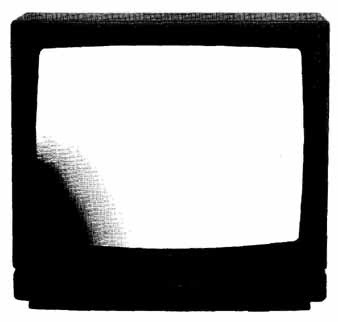
FIG. 22. An external degaussing is needed to clear up this screen.
3. The colors on the screen appear dim or the picture is negative. Three or more of the color guns might have an oxidation buildup. These symptoms also can point to a voltage problem. If the picture appears to be a negative of the intended picture, the problem might be a shorted CRT. If the CRT appears to be working correctly when tested, look at the luminance circuit and the output from the video amplifier circuit as you troubleshoot the chassis.
4. A spot (blotch) appears on the screen, as shown in FIG. 22. This happens if the shadow mask is faulty or the CRT is heavily magnetized, requiring external degaussing.
5. Little control of brightness, focus or contrast. Reduced brightness can be caused by an open heater element or no voltage reaching the heater element. If the CRT is shorted, you cannot control the brightness. There also might be a high voltage problem. If the CRT appears to be working correctly, look at the luminance circuit and the output from the final video amplifier circuit. Reduced focus or intermittent focus problems can be caused by a defective picture tube socket or improper focus voltage. Look at the pins on the CRT socket to see if they are broken, cracked or corroded. When you measure the focus voltage with a high-voltage meter and the voltage is too low, there might be a defective focus control or a leaky spark gap assembly. If the voltage is too high, the CRT, the flyback circuit, or components on the CRT board might be faulty.
6. High-voltage arcing. This can be caused by excessive voltage or by dirty connections. It also can be caused by a crack in the glass of the CRT that lets air in the picture tube. If there are cracks present, the CRT is unusable. If there are no cracks, you can discharge the tube, clean the leads and the tube area, and check the anode for excessively high voltage. You also can replace the high-voltage cable and plug.
If you suspect a high- or low-voltage problem, use a high-voltage probe to test the anode voltage and focus voltage.
Static and Dynamic Convergence
The electron beams in a picture tube come from three different electron guns. These three beams must pass through the same small hole or slot in the CRT’s grids. Then, each of the beams—red, green and blue—strikes in the corresponding color phosphor on the picture tube. Also, it is very important that the red beam strike only the red dots in each group of color dots on the screen, the blue beam strike the blue dots, and the green beam strike the green dots.
Regardless of the convergence system used the electron beams are magnetically bent so that they all pass through the small slots in the grids and are projected through the shadow mask to the appropriate colors on the screen. Dynamic convergence is the process that controls where the beams land while the beams are scanning the screen. Static convergence is the meeting of the beams at the screen’s center and is made possible by three small magnets that are in the convergence yoke. Static convergence is the starting point for dynamic convergence.
The beams that go to the corners of the screen travel further than the ones that go to the center of the screen. Therefore, those beams must receive additional magnetic corrections in order to land on their appropriate colors—this is accomplished by dynamic convergence.
Convergence Adjustments
If the beams become separated, called misconvergence, the effect worsens as the beams approach the edges of the screen, as shown in FIG. 23. On an otherwise normal signal, dynamic misconvergence appears as color fringes or shadows around the image where the beams do not converge.
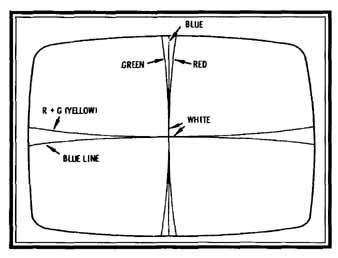
FIG. 23. A picture with misconvergence.
Before adjusting convergence, first perform a purity adjustment:
1. Operate the receiver for 15 minutes. Use a degaussing coil to de magnetize the CRT.
2. Turn off the red and blue guns.
3. Loosen the yoke and remove the rubber wedges.
4. Slide the yoke back as far as possible.
5. Move the purity magnets to center the green vertical band.
6. Slowly slide the yokes forward to obtain a uniform green screen.
===
Note: In older televisions, the convergence was controlled by three magnets and three coils mounted On the CRT neck. Convergence was performed by a convergence circuit feeding the appropriate waveforms for the three coils. Typically, the waveforms were adjusted by ten controls and two coils in the convergence circuit. Refer to the appropriate DATASHEET for proper convergence procedures for this type of circuit.
===
To adjust the convergence:
1. Tune in a crosshatch pattern.
2. Turn oft the green electron gun, so that only the red and blue are operating. Converge the red and blue beams at the center of the screen by rotating the four-pole static convergence magnet on the neck of the CRT. Magnets are shown in FIG. 24.
3. Turn on the green electron gun.
4. Align the red and blue beams with the green at the center of the screen by rotating the six-pole static convergence magnet.
5. Tighten the convergence magnet nut lock. If there is no seal, melt wax and reseal the assembly.
6. Tilt the yoke up or down to converge the vertical lines at the top and bottom of the screen, and the horizontal lines at the left and right sides of the screen.
7. Tilt the yoke right or left to converge the horizontal lines at the top and bottom of the screen, and the vertical lines at the right and left sides of the screen.
8. Repeat the convergence procedures as necessary.
9. Replace the rubber wedges.
Quiz
1. What is the last stage of the IF amplifier circuit?
2. At what point can you first measure the composite video signal?
3. What circuit controls where the audio/video signal is going?
4. Which signals do the comb filter separate?
5. Why is a delay line used?
Key
1. A video detector.
2. At the first video amplifier, or the output of the video detector.
3. The A/V switching circuit.
4. Chroma and luminance.
5. To delay the luminance one microsecond from chrominance.


